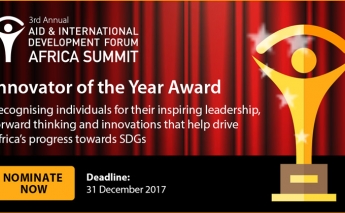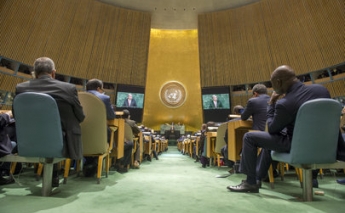Interviews
Turning The Tide In The Fight Against HIV/AIDS
The World Health Organisation (WHO) recognises the 1st December as World AIDS Day, a global public health campaign dedicated to raising awareness about AIDS spread by HIV. Approximately 36.7 million people...
Interview with Matthias Boyen, Drone Focal Point, HIV/AIDS Project Officer, UNICEF
How is UNICEF involved in humanitarian and development sectors? UNICEF has a long history of working in emergencies and humanitarian contexts, both natural and man-made. Originally called the United...
If Farmers cannot Farm, who will Feed the Hungry?
Whilst the world’s population is increasing due to the rise of climate change, global food production will decline drastically up until 2050, according to the International Food Policy Research Institute...
“Who Doesn’t Have a Toilet?”
Shockingly 2.4 billion people in the world do not have access to clean or safe toilets. Poor sanitation increases the risk of disease and malnutrition, especially for women and children. It is estimated...
Calling All Aid & Development Innovators in Africa
The Aid & International Development Forum is currently accepting nominations for the Innovator of the Year Award. This competition celebrates individuals, who have introduced game-changing initiatives,...
Developing Countries are in need of Recovery not just Resilience
The earthquake and tsunami that hit Japan in 2011 cost $235 billion, according to World Bank. Six years later, Japanese residents are still recovering from the natural disaster. Japan’s Reconstruction...
“WHO” is creating awareness for resistance to antibiotics?
Resistance to antibiotics is a serious threat; every year, at least 700,000 people die worldwide from infections that no longer respond to antibiotics. That toll could rise to 10 million by 2050. Pneumonia...
Typhoon Damrey Takes Over Southern Vietnam
Typhoon Damrey, which hit on November 4th, has affected at least one million children over the central region of Vietnam, says the United Nations Children’s Fund (UNICEF). Over 80,000 homes and 250,000...
Preventing Pneumonia to ‘Save the Children‘
Pneumonia has now taken over malaria as the most life threatening disease for children. According to a report by Save the Children, worldwide, “pneumonia kills two children under five every minute...
World Bank Investment in Kenya Climate-Smart Agriculture
The World Bank has recently approved a $250 million USD investment to the Climate-Smart Agriculture Project in Kenya. The main goal of the project is to “increase agricultural productivity and build...
Reaching SDGs through Private Sector Partnerships
Presently, over half of partnerships with the UN involve only one private sector partner. Additionally, 79% of UN partnerships last less than five years. These factors have led to a lack of scalability...
Interview with Karin Källander, Senior Research Advisor, Malaria Consortium
How is Malaria Consortium involved in humanitarian and development sectors? Malaria Consortium began as a malaria-focused non-profit organisation in 2003 and has grown to implement programmes across...




















